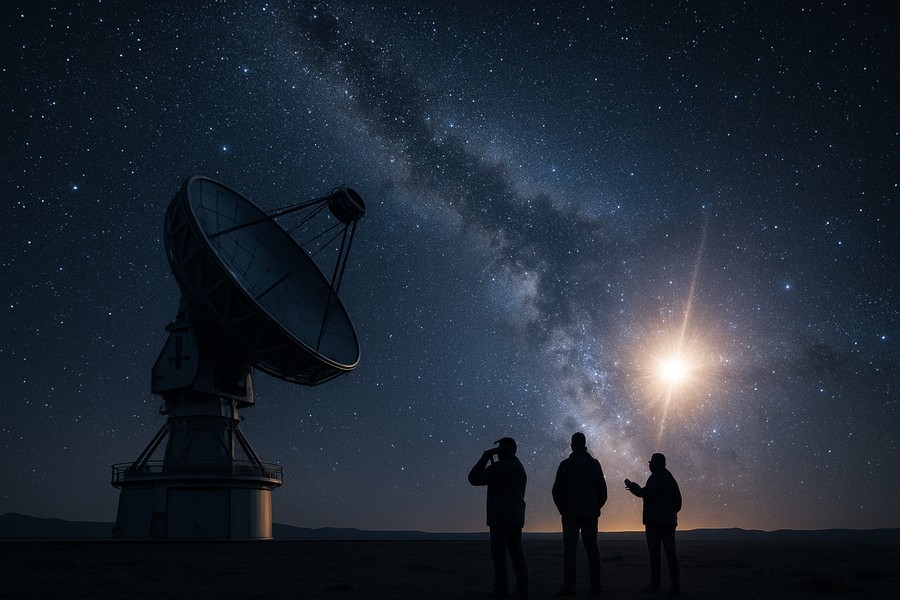
Unprecedented Cosmic Explosion Baffles Scientists
An extraordinary cosmic event has been observed by astronomers, an explosion of high-energy gamma rays that is unparalleled in its nature. Referred to as GRB 250702B, this gamma-ray burst (GRB) stands out due to its repeated explosions within a single day.
This unusual pattern poses a challenge to scientists as GRBs are generally thought to be the result of massive star deaths, a scenario that doesn't account for repeated explosions over 24 hours. One of the lead researchers commented that this GRB is unlike anything observed in a half-century of GRB research.
Identifying the Source of GRB 250702B
After initially being detected, the precise location of GRB 250702B was not immediately clear. However, subsequent investigations using an advanced infrared camera on an esteemed telescope enabled astronomers to pinpoint its origins outside of our galaxy, the Milky Way. This finding was later confirmed by another observatory.
It is generally theorized that GRBs happen when massive stars reach the end of their lifespan and collapse under their own gravity to form black holes or neutron stars. Alternatively, a star could get too close to a black hole and be torn apart in a process known as a "tidal disruption event."
These events lead to what are currently believed to be the most powerful explosions in the universe. They release an amount of energy in mere milliseconds to minutes that our sun would take approximately 10 billion years to radiate. However, GRB 250702B deviated from this norm, lasting about a day. This duration is 100 to 1,000 times longer than the majority of GRBs.
Unraveling the Mystery of GRB 250702B
One of the most intriguing aspects of GRB 250702B is that it was seen to explode multiple times. This is unusual because GRBs are typically one-time events due to their catastrophic origins. Initial observations saw GRB 250702B burst three times over a period of hours. An examination of data from another observatory revealed that the same source had exploded the previous day, making this a long-period repeating GRB, which is something astronomers have never before observed.
"If this explosion came from a massive star, it's a collapse unlike anything we've ever seen," said one of the researchers. But pinpointing the exact source of GRB 250702B proved challenging. Initial observations suggested it could have originated from our own galaxy, the Milky Way. To verify this, the research team used one of the world's most advanced telescopes located in northern Chile.
GRB 250702B's Origins Uncovered
Contrary to initial thoughts, observations showed that GRB 250702B actually originated outside the Milky Way, in a different galaxy. This finding was later confirmed. The exact distance to the source of GRB 250702B is still uncertain. However, indications from the size and brightness of its home galaxy suggest it is billions of light-years away.
"The fact that this object is from another galaxy means it is considerably more powerful than we initially thought," said one researcher. More research will be needed to accurately determine the location of GRB 250702B and to understand what caused this long-lasting, repeating blast of gamma rays.
Potential Explanations
One possible explanation is that a massive star collapsed onto itself, releasing an enormous amount of energy. However, this should have resulted in a GRB lasting only a few seconds. Another theory is that a star was torn apart in a tidal disruption event, which could produce a day-long GRB. But this theory fails to account for other characteristics of GRB 250702B, which appears to have been caused by an unusual star being destroyed by an even stranger black hole.
Currently, the research team continues to monitor the explosion site with the help of advanced telescopes, hoping to observe its aftermath and gain a better understanding of its nature. They may not yet know what caused this unique event, but their research has made a significant stride towards understanding this extremely unusual and fascinating cosmic object.
